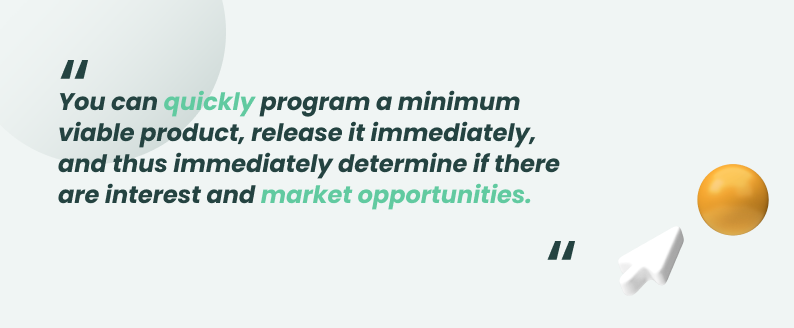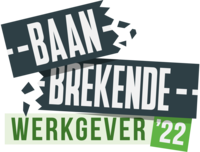
Little to no code, significant result!
No-code and low-code are two ways of developing software in which manually writing programming code is kept to an absolute minimum. With no-code (as the name suggests), there is no code involved at all, and the software is built entirely with visual building blocks that you link together like a Lego structure. With low-code, you can still add "real" code to those modules as desired. You don't need to have any knowledge of languages like Java, C#, or Python to create good applications.
"Many companies are seeing a change in the market, have an idea for a solution, and want to quickly develop that idea," says Nicolas Dierck, User Experience Designer at the Antwerp-based ICT consultant Pàu. "That is a typical example where low code or no code can play its strengths: you can quickly program a minimum viable product, release it immediately, and immediately check if there is interest and what the market opportunities are. Once those first early versions are up and running, you can potentially further refine your product and adapt it through regular programming techniques. Or, if the situation allows for it, you can continue working with low code or no code. Of course, that is also possible."
An ideal scenario looks something like this, explains the IT expert: "A certain department within a company quickly converts an idea into software through low code. In this way, they can focus on the core features and quickly validate the software. In a later stage, additional features can be added through regular programming work if the company is sure that the tool has a future and that the investment is worth it. Low code and no code are also excellent tools for, for example, conducting A/B tests (comparing different versions of the tool by different users, editor's note) or just experimenting with software."

VR en AR
There are actually no limits on the kind of applications you can program with low code and no code, says Dierck. It covers a broad range, from web applications to e-commerce applications, landing pages, and even VR and AR applications. Setting up chatbots and voice interfaces for smart speakers is also not a problem. "These are all applications that you will provide to your end customers," explains Dierck. "Of course, you can also use this to create applications to streamline the workflow of your internal business applications."
In practice, the use of low code and no code happens in two ways, explains Dierck. "Either you do everything on one specific platform that handles all aspects, from building the code to data management to setting up a front end. Or you use a separate platform for each aspect that you then link together. Most of these low-code and no-code platforms run in the cloud, although there are also versions that you can run on your own servers or through your own website. Many of these platforms also come with typical "building blocks" that are often used in many applications, such as login flows and shopping carts for e-commerce applications."
"You can quickly program a minimum viable product, release it immediately, and thus immediately determine if there is interest and what the market opportunities are.

Three advantages
The speed of development through low code and no code is therefore one of the three significant advantages of this approach, according to Dierck. "How much time you save or how much faster your application is ready depends on the application, so it is difficult to draw a line there. But that it is faster is a given. Along with that speed comes an interesting cost saving, as software developers cost money."
The third advantage is the high accessibility of this way of software development, argues Dierck. There is certainly still a learning curve involved in low code and no code, but it is lower than mastering a programming language. "In this way, for example, CEOs, marketing managers, or business managers can quickly create software without having to go to the IT department of the company. Usually, those IT people don't mind that either (laughs). In this way, they can mainly focus on larger and more challenging projects within the company."
Specific software
In the coming years, the importance of low code and no code will only increase, Dierck is convinced. "That market is absolutely flourishing. In many large companies, these methodologies have already become indispensable to supporting the internal flow of the company. For example, there are also many start-ups that rely almost entirely on low code and no code."
In that case, an obvious question arises: shouldn't 'ordinary' programmers be afraid for their job? It probably won't come to that, according to the Pàu employee. "No, there is still more than enough demand for specific software, with particular features that you can only build with regular programming. Moreover, those low-code and no-code platforms themselves also have to be built by someone, and that is the work of programmers. So I am pretty sure that they absolutely don't have to fear for their job in the coming years.

